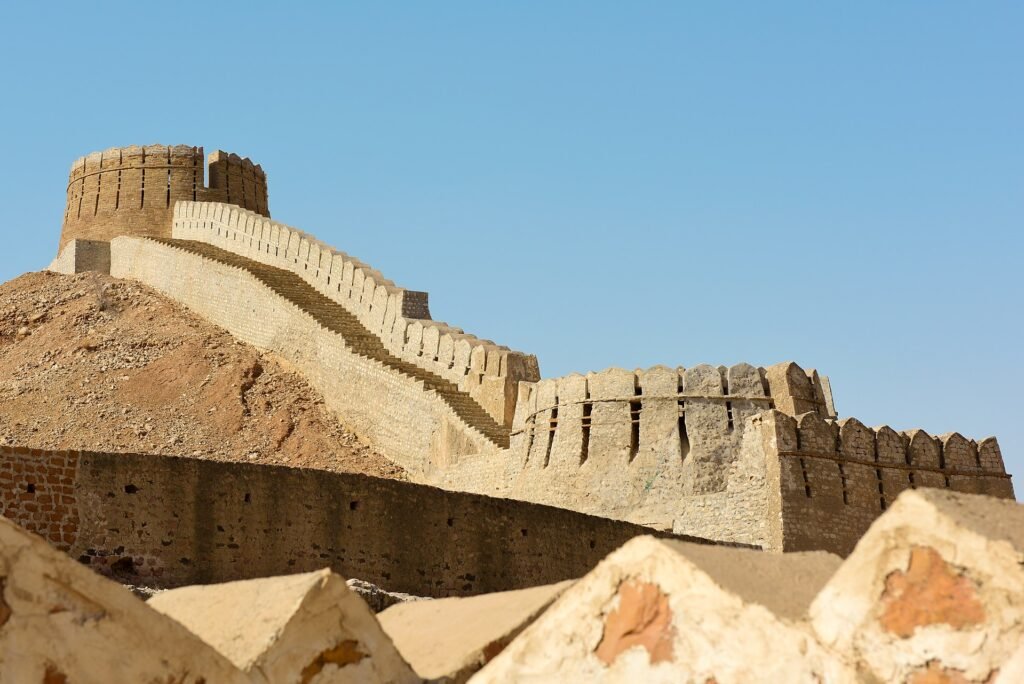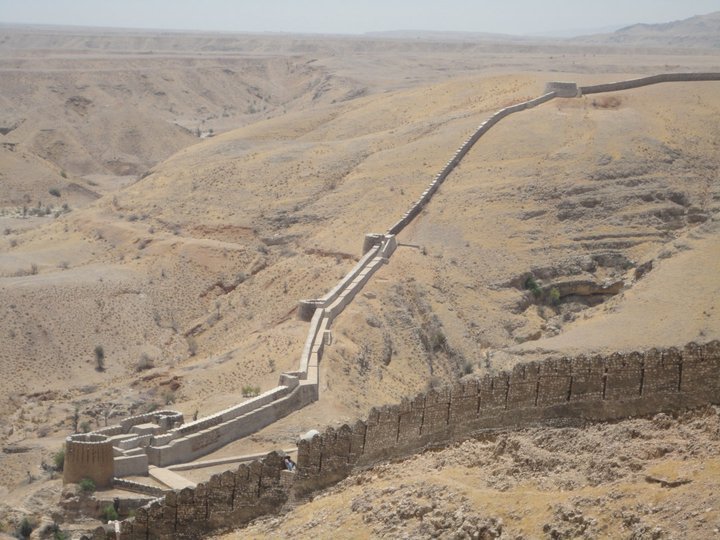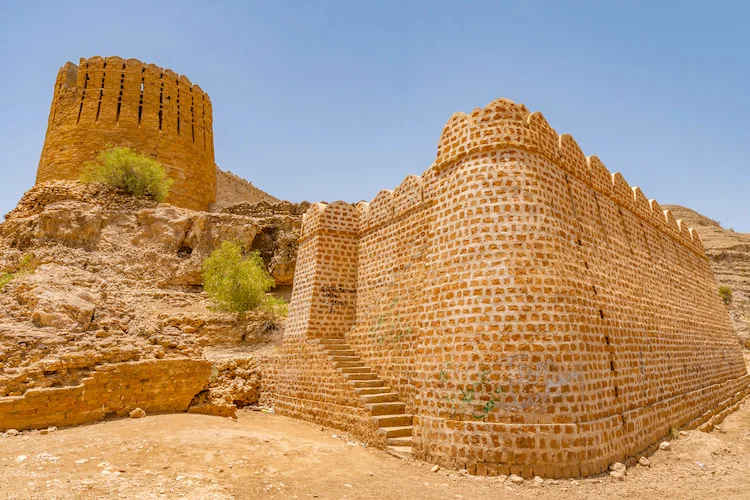It commands respect for its existence in this region, being a story of times gone by, and a strategic balance; hence, it is popularly known as the “Great Wall of Sindh.” This ancient fortification in Sindh Province, Pakistan, has been fascinating historians, travelers, and lovers of architecture since time unknown. The aim of this paper will lie in discussing three aspects of Ranikot Fort, namely its origins, architectural brilliance, and historical importance.
- The Origins of Ranikot Fort
1.1 History
There are numerous speculations regarding who constructed Ranikot Fort, although none of it has been proven as yet. History associated with the fort can sometimes be dated from the Sassanian period, although again there is no evidence to confirm this. In its current form, the fort has been dated to the medieval period.
1.2 Theories of Construction
It was variously ascribed by the different historians-first to the Sassanian Empire, then to the period of Arabs, and even to the period of Ghaznavids. The very location may denote that it should have played an important role in regional defense. - Architectural Wonders
2.1 Brief Overview of the Fort Complex
First of all, Ranikot Fort impresses with its huge size and complicated structure: it reaches the area of about 26 square kilometers and stands out among the biggest forts in the world. Its walls are more than 30 km long with fairly intact watchtowers and bastions.
It also describes the fort architecture that elaborates the defense mechanism through thick walls, moats, and well-planned bastions. Each one of these, when combined, created huge impact against invaders.
2.3 Main Buildings and Structures Contained in the Fort
Some of the major buildings and structures contained in the fort include:
The Entrance: It was supposed to be a grand entrance leading inside through a main entrance gate.
Citadel: This is the highest place in the fort and thus could afford to have a view of everything that surrounds it.
Residential Quarters: Accommodation for occupants and soldiers that stayed in the fort.

- History Significance
3.1 Strategic Importance
It turned out to be an extremely important place for the Ranikot Fort since it had a position that lay on the ancient trade routes and thereby controlled access from the Arabian Sea into the interior parts of the Indian subcontinent. Thus, it used to play a regional role in politics and trade.
3.2 Regional Conflicts
The fort has been a witness to wars for so many centuries. It was also one perfect barrier against Mughal and British invasions. - Historical Personalities
4.1. Mirza Family
The Mirza family, in general can be considered as the powerful Sindhi dynasty which originally has enormous historical importance in the case of Ranikot. The Mirza family extended the Ranikot when they were in power and guarded the forts from the invaders .
4.2. Historical Rulers
History is replete with various leaderships that Ranikot Fort has seen right from the Mughal Empire down to British Raj. Their contribution to adding value in history for the fort definitely left a dent. - Ranikot Fort During the British Colonial Rule
5.1 British Interest in the Fort
Due to its strategic position, the Ranikot Fort had immense attraction during the period of the British colonial era, and extensive surveys and explorations were carried out by the then British in order to establish it as a military outpost.
5.2 Changes and Modifications
A number of changes were brought in by the British in the infrastructure of the fort in improving its defense systems and adding other facilities.
- Modern-Day Significance
6.1 Preservation Efforts
Restoratory and preservative work at Ranikot Fort has been quite rampantly in process for the last couple of years. Many organizations and governmental bodies try for the continuation of this historic entity to stand the test of time.
6.2 Tourism and Cultural Impact
Soon, the fort started to advertise tourism and the tourists started to arrive one after another who wanted a glimpse of the historical and the architectural glory that lay inside the fort. It also shows part of the culture the locals share in.
- Future of Ranikot Fort
7.1 Future Plans
Accessibility in this case has something to do with the fact that future developments channel in making the fort well-preserved as far as accessibility is concerned. It is also where plans relating to facilities, visiting means and educational knowledge enhance the people’s awareness in terms of historic importance that has something to do with the fort.
7.2 Challenges
There are a lot of options available to be exploited in promotion of Ranikot Fort, yet due consideration would have to be taken from environmental factors and budgetary limitations it faces to assure its long-term preservation.
Conclusion
The sprawling expanses and resplendent history stand tall in testimony to the architectural and strategic genius that it was for its time. From its mysterious beginnings, serving right through various historical conflicts, the fort stands and stands to this day, a reminder of bygone grandeur of the region. - What is the area of the Ranikot Fort?
Ranikot Fort measures about 26 square kilometers with walls over more than 30 km in length. - Name some major historic personalities associated with Ranikot Fort.

It is the famous family known as the Mirza family, besides other rulers of the Mughal Empire and the British Raj.
- What relation do they have with the preservation of Ranikot Fort today?
Today, it undergoes restoration processes and preservation to make the fort more accessible for visitors in order to maintain its historical value.
- In what ways can a visitor see Ranikot Fort today?
This fort has umpteen long lengths of walls and watchtowers guarding the most important structures of this fort guided by wall notices explaining its history guided by a tourist guide.




